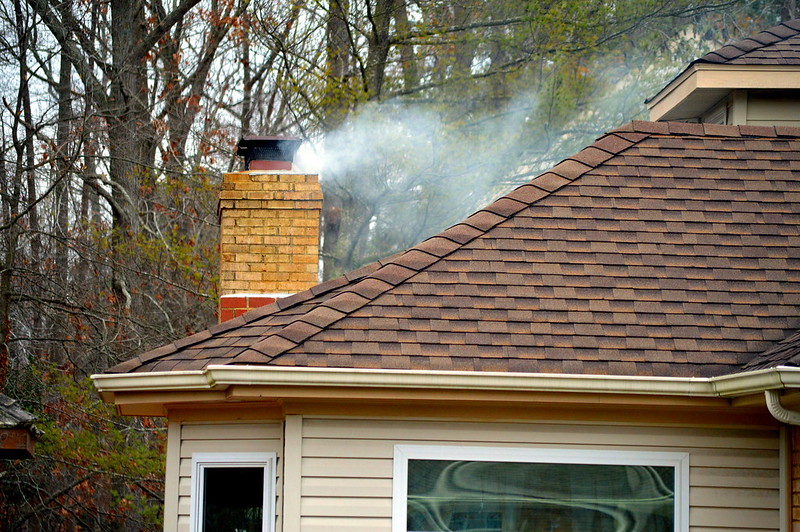If you have a chimney and a fireplace in your home, then you know the true joy of starting up a fire and curling up with a cup of hot chocolate and a great book on a cold winter or spring night.
But if you want to keep having those amazing nights — not to mention, your chimney’s ability to vent your boiler — then you’re going to need to pay attention to chimney maintenance. Without the right chimney maintenance and cleaning, you could be looking at a non-function chimney or, worse yet, a dangerous hazard to your home, roof, and surroundings.
In this post, we’re going to go over 5 simple chimney maintenance tips that will help keep your fireplace in tip-top shape… and reduce your risk of home and roof damage.
1. Burn the Right Wood
Wood burning fireplaces are perhaps the most common in traditional homes, but they are still popular. Especially with an insert, they can bring such warmth and comfort to a home that they’re sure to remain a staple even with the emergence of gas burning and electric fireplaces.
One of the key ways to keep your chimney functioning properly for many years with a wood burning stove in your fireplace is to burn the right wood. You might be thinking, “isn’t all wood good wood to burn?”
Sure, lots of wood can and will burn when set on fire. You will want to make sure your wood is properly aged (at least six months since it’s been split, ideally closer to a year). However, that doesn’t mean all wood is created equal when it comes to fireplaces and chimneys.
Hardwood is going to be your best option for burning. Hardwood logs including ash, oak, birch, etc, burn hotter and for longer, which means you’re getting more bang for your buck compared to cheaper softwood options like cedar, pine, spruce, and others.
Hardwood also has less sap & resin, which means that burning that in your fireplace is less likely to lead to a large build-up of creosote. Creosote is a build up of ash and other particles that can result in dangerous fire hazards. It can also make the chimney harder to clean and maintain over time.
Bottom line: try to burn hardwood when you can.
2. Waterproofing
The exterior component of your chimney is exposed to all of the outdoor elements, just like your roof.
Without proper waterproofing, water and wind from the outside world can create cracks in your chimney, which can lead to roof leaks, unwanted moisture inside the chimney, damage to the chimney/walls, and mold growth.
Protect your chimney with waterproofing methods like sealants, chimney covers, crowns, and other waterproofing options.
3. Cleaning & Sweeping
Be sure to keep your chimney on a regular cleaning and chimney sweeping schedule. This will prevent any problems from worsening over time and catch issues in their beginning stages so they can be remedied.
Regular cleaning and sweeping can also prevent dangerous hazards from building up. Build up of creosote can lead to increased risk of house fires along with exposure to dangerous particles like carbon monoxide and ash.
You should have at least one annual cleaning every year with more scheduled depending on if you use the chimney regularly or just once in a while.
4. Chimney Caps
If you don’t have a chimney cap on your chimney, you should seriously consider having one installed. Chimney caps are essentially barriers that can protect your chimney from a number of factors, including:
- Weather (rain, snow, ice, etc)
- Animals (birds, racoons, mice, rats, etc)
- Debris (leaves, sticks, etc)
If your chimney doesn’t have a chimney cap, you’ll likely see more rapid deterioration of your flue and of the chimney itself. Without the protection of the cap, you could have a build up of debris, which can lead to fire hazard and health risks thanks to carbon monoxide that gets trapped in the home.
If your chimney already has a chimney cap, you’re not off the hook with maintenance! You need to regularly inspect your chimney cap to check for signs of damage or deterioration. Caps are also prone to buildups of debris, dirt, and dust that can decrease its effectiveness at protection — and proper exhaust. Cleaning and maintaining this part of the chimney is crucial for the overall maintenance of the chimney.
5. Get a Chimney Inspection
Along with an annual cleaning, we highly recommend getting a chimney inspection at least once per year as well. There are various levels of chimney inspection that you can get depending on your situation.
Most people only need a level 1 or a level 2 chimney inspection. Inspections are crucial if you suspect any serious damage to the chimney or if you’ve had any storms, damages, or other issues in the home. Professionals who perform these inspections can then guide you with specific maintenance tips that you should follow for your home & chimney’s particular issues.
Have More Questions?
If you have a chimney, you should understand that it’s a key part to your entire home system and has direct effects on many other parts of the home. Chimney damage and issues can easily lead to damage inside the home as well as serious roof damage.
Need more help with your maintenance schedule? Have a question about your chimney, roof, or home? Don’t hesitate to reach out to us at Farina Roofing!
Image credit: Flickr/Bill Smith


